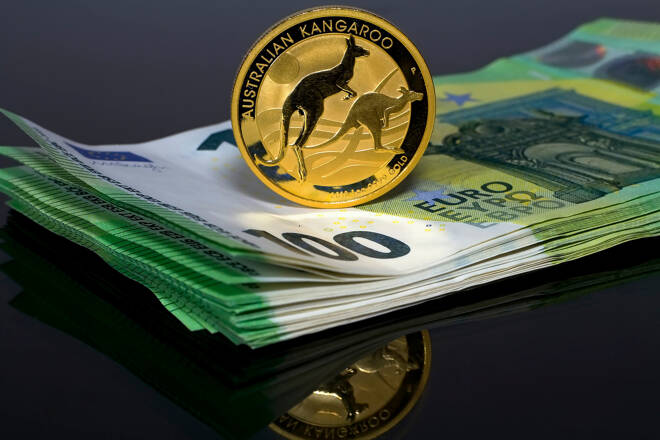Advertisement
Advertisement
AUD to USD Forecast: Aussie Inflation Data Pivotal for RBA Interest Rate Outlook
By:
Key Points:
- On Friday, April 26, producer prices from Australia will be in focus.
- Following the consumer price inflation numbers, unexpectedly high producer prices could further postpone an RBA interest rate cut.
- Later in the session, the US Personal Income and Expenditures Report and Michigan Consumer Sentiment numbers also need consideration.
Australian Producer Prices and the RBA Rate Path
On Friday, April 26, producer prices from Australia will influence buyer appetite for the AUD/USD.
Economists forecast producer prices to increase 2.6% year-on-year in Q1 2024 compared with a 4.1% increase in Q4 2023.
Additionally, economists expect producer prices to rise by 0.6% in Q1 after advancing by 0.9% in Q4.
Hotter-than-expected producer prices could raise speculation about an RBA interest rate hike. Producers increase prices in a higher-demand environment, passing costs onto consumers.
In Q1, consumer price inflation numbers were higher than forecasts, influencing sentiment toward the RBA rate path. The annual inflation rate eased from 4.1% to 3.6% in Q1 2024.
A higher-for-longer RBA rate path could raise borrowing costs and reduce disposable income. Downward trends in disposable income may curb consumer spending and dampen demand-driven inflation.
US Economic Calendar: Personal Income and Expenditures in Focus
Later in the session, the all-important Personal Income and Expenditures Report will be in focus.
Economists forecast personal income and spending to increase by 0.5% and 0.6% in March, respectively. Personal income and spending rose by 0.3% and 0.8% in February. Moreover, economists expect the Core PCE Price Index to increase 2.6% year-on-year after rising 2.8% in February.
Upward personal income/spending trends and hotter-than-expected inflation numbers could sink bets on a September Fed rate cut.
A more hawkish Fed rate path would raise borrowing costs and lower disposable income. Downward trends in disposable income could affect consumer spending and dampen demand-driven inflationary pressures.
Other economic indicators include finalized Michigan Consumer Sentiment numbers for April. Upward revisions to the headline number and the Michigan Inflation Expectations Index would need consideration.
Short-Term Forecast
Near-term AUD/USD trends will hinge on the US Personal Income and Expenditures Report. Better-than-expected numbers could reduce further investor expectations of a September Fed rate cut. However, Australian producer prices will influence investor sentiment toward the RBA rate path. The RBA watered down discussions about an interest rate hike in March.
AUD/USD Price Action
Daily Chart
The AUD/USD hovered below the 50-day and 200-day EMAs, sending bearish price signals.
An Aussie dollar breakout from the 50-day EMA would support a move to the 200-day EMA and the $0.65760 resistance level. An AUD/USD move through the $0.65760 resistance level would give the bulls a run at the $0.66 handle.
Aussie producer prices and the US Personal Income and Expenditures Report need consideration.
Conversely, an AUD/USD fall through the $0.64500 handle would give the bears a run at the $0.64582 support level. A drop below the $0.64582 support level would bring the $0.62713 support level into play.
Given a 14-period Daily RSI reading of 52.07, the AUD/USD could return to the $0.66 handle before entering overbought territory.
About the Author
Bob Masonauthor
With over 28 years of experience in the financial industry, Bob has worked with various global rating agencies and multinational banks. Currently he is covering currencies, commodities, alternative asset classes and global equities, focusing mostly on European and Asian markets.
Did you find this article useful?
Latest news and analysis
Advertisement
